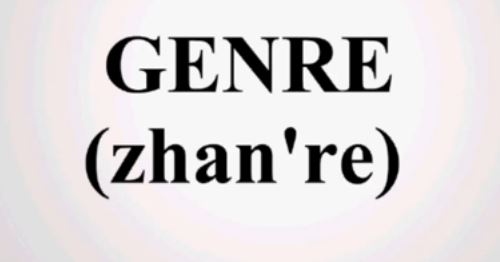A few weeks ago, I wrote about the significance of feminist science fiction for feminist games studies, the ways our scholarship is impacted by the forms we write about and research. And I’ve been continuing to think about the idea of criticism in both these fields—feminist criticism of science fiction and feminist criticism of video games—and the parallels between the ways these two critical lenses are positioned and perceived in the academy. Indeed, I’ve been wondering—what are the implications of these parallels for feminist games studies and its location in academia?
In “It’s Still Science Fiction: Strategies of Feminist Science Fiction Criticism,” Robin Roberts traces the ways feminist critics and theorists have approached science fiction. In doing so, Roberts argues that feminist theorists first approached science fiction hesitantly, due to the academic stigmatization of popular cultural texts and the ways that SF often marginalizes women’s voices and objectifies women’s bodies. Roberts argues that this stigmatization and marginalization initially caused feminist SF critics to work to legitimize their research in academia in often one of two ways—that is, to legitimize feminist SF criticism by either (1) constructing SF as an extension of canon and connecting it to canonical texts or (2) avoiding and minimizing the categorization as SF altogether.
It seems that, in Lost in Space: Probing Feminist Science Fiction and Beyond, Marleen Barr takes the latter approach in her critique of the ways feminist science fiction is delegitimized and marginalized in academia; in short, her solution is to incorporate feminist SF into a category she calls feminist fabulation, an “umbrella term,” as she calls it, that works to challenge static literary hierarchies. She incorporates the category of feminist fabulation into the field of postmodernism, arguing that doing so and that rethinking the term feminist SF “is in this literature’s best interest” because it makes feminist SF’s efforts at empowerment and social change more central goals for the field of literature. And, ultimately, Barr believes that recasting feminist SF in this way—integrating it, within the umbrella term of feminist fabulation, into the field of postmodern fiction—blurs the separation between canonical and noncanonical forms of literature, between marginalized and centralized literary concerns.
Roberts has some problems with this line of argumentation, though, and instead argues that feminist SF critics and writers should resist the idea of canonization and assimilation—because she believes that the modes of legitimization that Barr’s arguments exemplify work to obscure the ways SF does things differently and to perpetuate high/low divides. Raffaella Baccolini articulates similar concerns in “Gender and Genre in the Feminist Critical Dystopias of Katharine Burdekin, Margaret Atwood, and Octavia Butler,” in which Baccolini examines the intersection of genre, gender, and science fiction; Indeed, Baccolini argues that a lot of “intellectual energy” has be used to find a “satisfying definition of science fiction,” which leads to the question of whether or not SF should be thought of as an independent genre or a derivative one (that is, a subgenre). And the problem with this, she continues, is that (as Roberts also says) it perpetuates binaries—high vs. low culture, original vs. derivative literature, superior vs. inferior work. This problem of binaries causes Baccolini to question the very idea of genre itself and the ways it excludes and perpetuates boundaried notions of literature and to argue that feminist literary scholars need to think, instead, about the intersection of gender and genre (such as the ways these things intersect in feminist SF) and the ways such an intersection “helps to create new texts.” Indeed, Baccolini contends that, by focusing on this creation of new texts, feminist theory can be used to interrogate and challenge the marginalization and erasure that occurs in canons and forms dominated by men—and not just the ways this domination and marginalization impact modes of representation within these forms and genres but also in the ways this all results in women’s writing itself also being deemed noncanonical.
And while Roberts points out that the legitimacy of feminist SF within the academy is increasingly less and less of an issue, she argues that we nonetheless need to ask ourselves—what comes next, “assimilation or independence”? When thinking about this, Roberts continues—when thinking about how we determine what comes next for feminist SF, when thinking about how feminist SF might claim a space for itself within academia—we should also ask, “Why should the priorities of academics who do not even read science fiction determine how that fiction is presented and analyzed?” That is to say, when thinking about the location of feminist SF in the academy, we must interrogate not only whose work is granted the authority and legitimacy of being studied by literary scholars but also who is granted the authority and legitimacy of being literary scholars—who gets to be a knower and what gets to be known.
And I think there are a lot of points of linkage, here, to feminist games studies. I think there are many implications in the location of feminist SF criticism within the academy for the location and trajectory of feminist games studies within the academy. Because feminist games studies, as an emerging field, faces similar concerns, concerns that raise similar questions that those of us working within the field must ask—how can we legitimize feminist games studies as a field worth studying in the academy? Do we seek assimilation within games studies? Or do we seek independence? Where and how do we claim a space for our feminist criticism and scholarship? For our feminist methodologies and epistemologies? For the feminist analysis and critique of games?
It seems to me that these questions warrant much further discussion than I’ve provided here, especially since our efforts within the field of feminist games studies can have similar implications as feminist SF criticism does for the ways popular-cultural artifacts are explored in the academy, implications for the ways high/low culture binaries might either be problematically perpetuated or disruptively dismantled. And hopefully, by continuing to discuss and interrogate these implications, we can conceive of ways for feminist games studies to do the latter—to dismantle these boundaries and divides in the texts we explore and in who gets to explore them.




